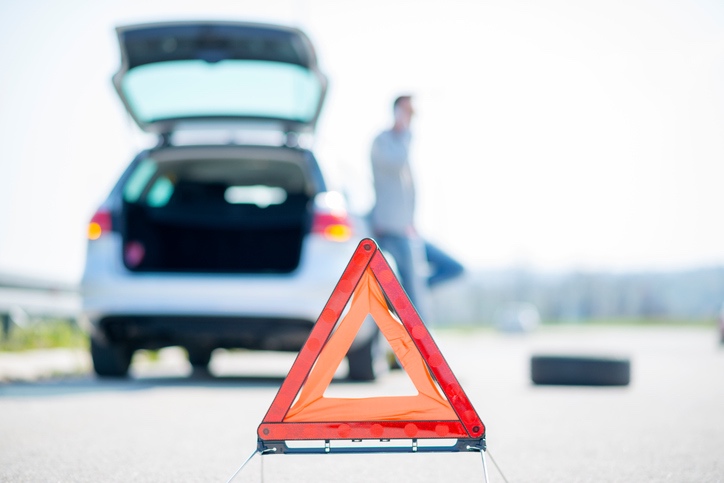
Having your car break down, getting into an accident, or being run off the road are all bad situations but when you do not have the right supplies to help you get through the event, they become even worse.
While most of us know that we should have a car emergency kit, unfortunately, few of us actually do. So to help you start protecting yourself and your passengers, let’s take a look at 10 items you should be certain to have in your car emergency kit.
1. A charged cellphone
Chances are this is something you will already have on you, but if you sometimes forget your phone or just want a backup, you can keep a simple bar phone charged and in the car. These phones tend to hold their charge for a very long time.
2. Vital phone numbers
These should be programmed into your phone, but you might want a written backup just in case. Numbers you should have include your roadside assistance number, the number of your insurance agent, the contact information for a tow service, and the numbers of those you might need to alert to a delay, such as your daycare or boss.
3. Jumper cables
In most cases involving stranded motorists, the culprit is the battery. The good news is that this is both something that tends to strike when you are already parked somewhere safe and you can easily remedy it in most cases by using jumper cables. You can opt for the classic version or self-powered cables that use a lithium-ion battery.
4. Triangle reflectors
While flares are the classic option for alerting other motorists to your stranded vehicle, not everyone is comfortable with them. Plus, they will burn out after a while. An alternative that works for the majority of situations is to purchase triangle reflectors. You can use them again and again and they are not dangerous to handle. Opt for three and space them about 50 feet apart to give oncoming cars sufficient warning.
5. Fluids for the car
While you won’t want to cart around all the fluids your car uses, you should have some on hand. The three most important are motor oil, coolant, and washer fluid. A quart should do it for the motor oil, while the coolant should be about a gallon. For the washer fluid, a small spray bottle is fine.
6. First-aid kit
You can purchase these kits pre-made, but you can also make you own. Include Band-Aids of various sizes, tape, gauze, aspirin, antiseptic wipes, antibiotic ointment, and any medications that a member of your family might require.
7. Fire extinguisher
A motor vehicle fire is very dangerous, so you want to have an extinguisher in the car to prevent one from getting out of control. Not any model will do, so look for those rated Class B and Class C. You may need to buy two: a Class B for fuel fires and a Class C for electrical fires.
8. A flashlight and batteries
You may want to have a few different types of flashlights. Powerful lantern style lights are great for helping you inspect your car while smaller flashlights can help passengers feel safe as they wait should you be stranded at night. Make sure to have extra batteries for all flashlights in your kit.
9. A rain poncho
This one might seem a bit odd, but if you get a flat in the rain, you will likely want to change it and get back on the road rather than sit and wait it out. To ensure you do not end up soaked to the bone, keep a poncho in your kit. You can find these in small packages at most dollar stores.
10. Water and food
You never know how long you will be stuck, so you need to be prepared to survive a good wait. Water and food are vital. Keep at least a gallon of water with you as well as snacks that do not perish but offer plenty of protein.
Keep in mind that this is not a comprehensive list. If you live somewhere cold, for example, you will want items like ice scrapers, snow shovels, and a space blanket to keep warm. However, this list is a solid start that you can easily customize based on your location and driving habits. So get started creating your car emergency kit, and stay safe.

Leave a Reply